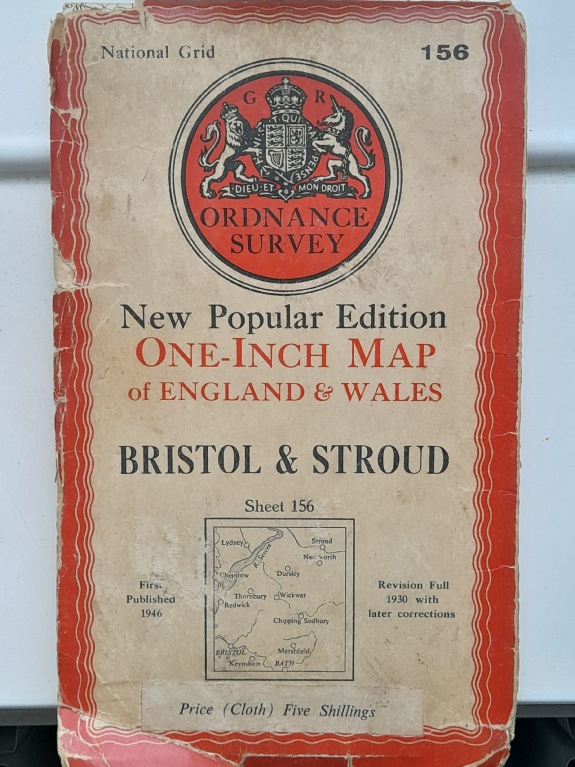THE SOMERSET COAST AND THE PORT OF BRISTOL
You have already read of the Severn Sea and the two Holms which rise out of its waters, and twice you landed with the Hanes upon our shore. Now we will travel from east to west along the coast stopping at places of interest as we pass. But first we must pay a visit to the city of Bristol, an ancient port on the river Avon, one of the boundaries between Gloucester and Somerset. Yet Bristol is in neither of these counties ; for being a place of great importance, it long ago received a charter making it a county to itself. Now Bristol is a very ancient place. Like Bath it was the site of a British town, and the Romans used it as a port. The Saxons called it Brigstow, which means Bridge-
Brigstowe ; Bristol; Exactly when the city was founded is unknown. The earliest relic is a silver coin in the Royal Collection at Stockholm, Sweden. The coin bears the image of Ethelred Unrede (978 -
The named streets are still in existence. Being built in the crook of the River Frome next to the River Avon provided Bristol with near perfect protection. The building of a wall around the town further increased its fortifications. A walk around the area bounded by the old city walls -
ORATION : The Court of Bricgstowe No. 75, 2nd April 2011 by W.& Em.Bro. Colin Lowther, Provincial Eminent Grand Prior Elect of Wessex ;Most Worshipful Grand Master, Worshipful Master, Worshipful Brethren, Brethren.Brethren, we are assembled here today in harmony and peace, and privileged to be present at, and to participate in, the consecration of the newest Court of Athelstan, the sixth Court in the Province of Wessex.
Brigstowe Court No. 75.
Bristol or is it Brigstowe, has a recorded history of over 1000 years. There is an unrecorded history going back to pre Roman times. It was a small market town or burgh from as early as the 10th Century and forming part of the Kingdom of Wessex. 1000 years has seen many changes. We meet here today in this ancient city and in this wonderful Masonic Temple. The Bristol we know today has grown from a small town into a thriving city. The original Kingdom of Wessex disappeared many years ago but the name Wessex lives on and we now have the Province of Wessex in the Masonic Order of Athelstan. The building in which we meet today is the Province of Bristol. All of the Orders and Degrees administered by the Province of Bristol meet in this one building. Craft, Royal Arch, Mark, Royal Ark Mariners and the Camp of Baldwyn. The Camp of Baldwyn holds a unique position in English Freemasonry. It incorporates in one body, five Royal Orders of Knighthood.
This building was acquired by the Province in 1872 and with the exception of a number of years following damage by enemy action in 1940, every meeting has been held within these walls.
As the Masonic Order of Athelstan, we are youngsters in the Masonic world. But our Order is based on foundations laid down when Bricgstowe was but a youngster. Ten Provinces each with Ten Courts. Representing, as near as possible, the original Kingdoms and Guilds as they were set up by King Athelstan during his reign as First King of the English. All this when Bristol was just a village near a bridge.
Since that date, there have been many changes. Bristol was granted a Royal Charter in 1155 and was granted County status in 1373 separate from Gloucestershire and Somerset. The Masonic Province of Bristol has as its boundary, the original city boundary.
The history of Bristol as a city and a Province is an inspiration to us all. 1460, William Canynge, Mayor of Bristol. St Mathyas Chapel being in ruins was this year erected by him into a Freemasons Hall. We have Canynge Lodge.
In 1497, John Cabot set sail from the port of Bristol and discovered North America. Bristol has Cabot Lodge and Cabot Chapter. In 1532, Robert and Nicholas Thorne founded the Bristol Grammar School. They have Robert Thorne Lodge.
John Whitson, in his will, left funds for the foundation of the Redmaids School, the oldest surviving girls school in England. They have Whitson Lodge. Edward Hodges Bailey, the Sculptor created the frieze above the main entrance to this building. His name is commerated by Baily Lodge. Colston, Brunel and Chatterton, all famous names with strong Bristol connections.
There are records of a Masonic Lodge in Bristol in 1725, the Nags Head Lodge No. 29. Not, I am sure named after a famous Bristolian but the hostelry in which they met.
1739 saw the first Methodist Chapel, the building still exists. 1771, Records of the Royal Sussex Lodge of Hospitality show that the Lodge was opened at half past eight and closed immediately with all due Harmony and Decorum.
In 1844 Brunel's SS Great Britain was launched, 1864, the Bristol Suspension bridge was built, both still here today and we finish the list with Concorde
.
The Province of Bristol was created in 1786 at the request of Brother Thomas Dunkerley. He was the first Provincial Grand Master for Bristol. There are now 36 Lodges in the Province of Bristol, all meeting in this wonderful building. During 1786, Dunkerley was also the Provincial Grand Master in five other Provinces.
However, we are assembled here today not to look back. We look to the future and the growth of the Masonic Order of Athelstan. As Court number 75 we represent a milestone in the history of the Order.
As Bricgstowe Court, we must always remember, although we meet in the heart of the Province of Bristol, we are not Bristol Masons, we are part of the Province of Wessex, meeting in this historic Bristol building. A building steeped in Masonic history.
Many of the founders of Bricgstowe Court are Bristol Masons, brought up on sound Bristol traditions. As members of the Order of Athelstan they will now see the fine precepts and disciplines on which the Order of Athelstan is founded
Built on solid foundations, the Order of Athelstan is growing month by month, year by year. The building bricks are being added one by one. As Bricgstowe Court, we are the 75th brick. It may not be very long before the 100th brick is laid and the building completed.
As Court Master Masons, we are inspired by our leaders. They lead from the front. They are here today to watch with interest as we are formed into a new Court. They will follow our progress as we grow from strength to strength and will attend our future meetings when time permits.
Right Worshipful Brother Malcolm Burns, Provincial Grand Master for the Province of Wessex will guide us and encourage us to make further advances in our Masonic knowledge.
Brethren, today we add the name of Bricgstowe Court number 75 to the register of the Grand Court of the Masonic Order of Athelstan in England, Wales and its Provinces Overseas.
Let us go forth, inspired by the famous names that appear in the history of the city of Bristol.
May the Great Architect of the Universe bless you and forever guide and protect you.

